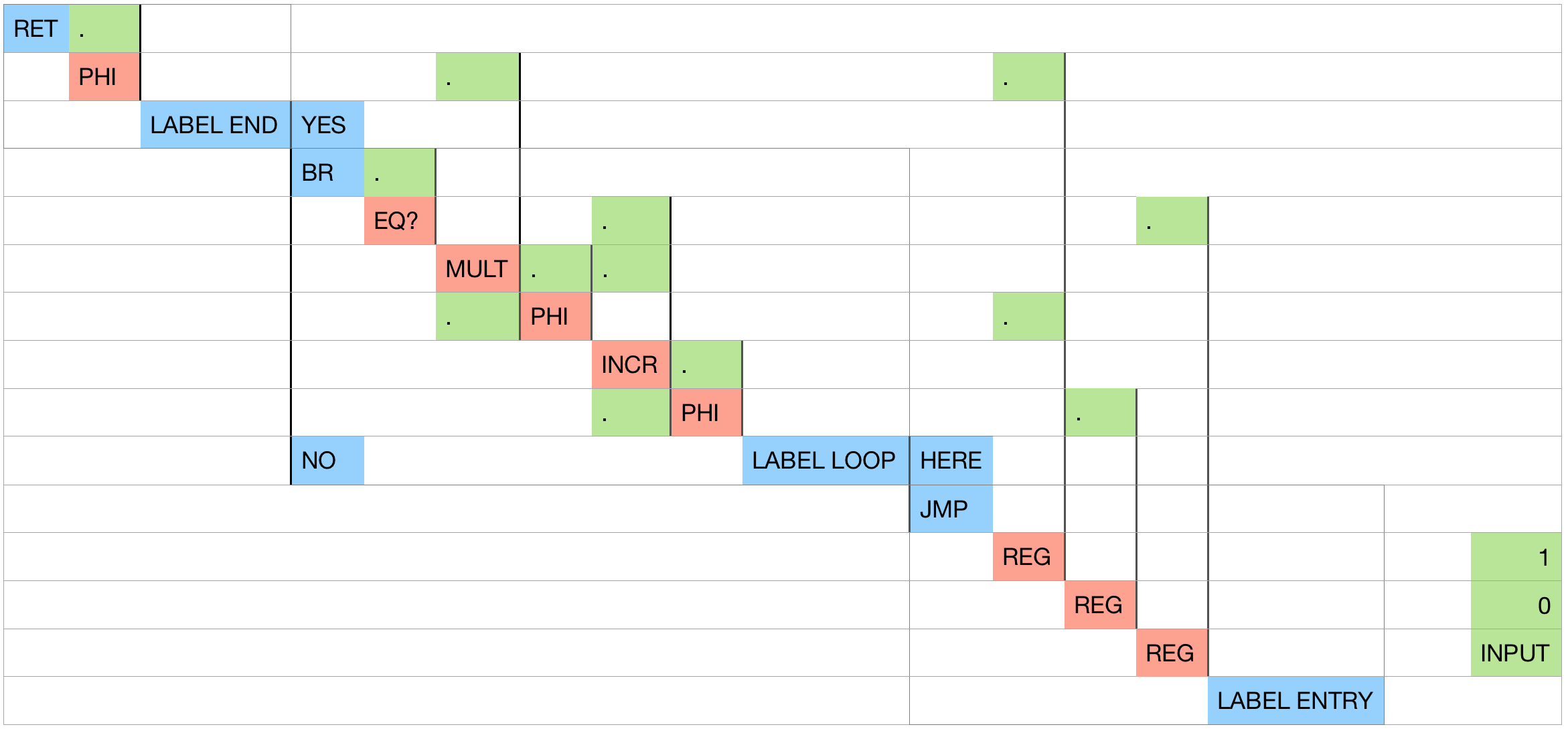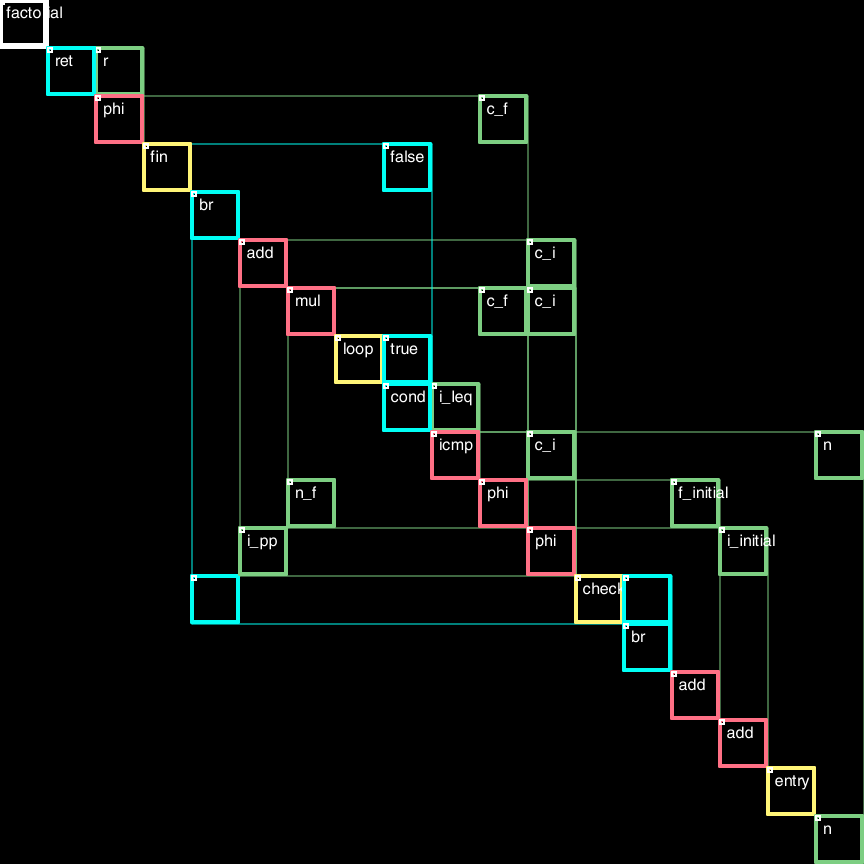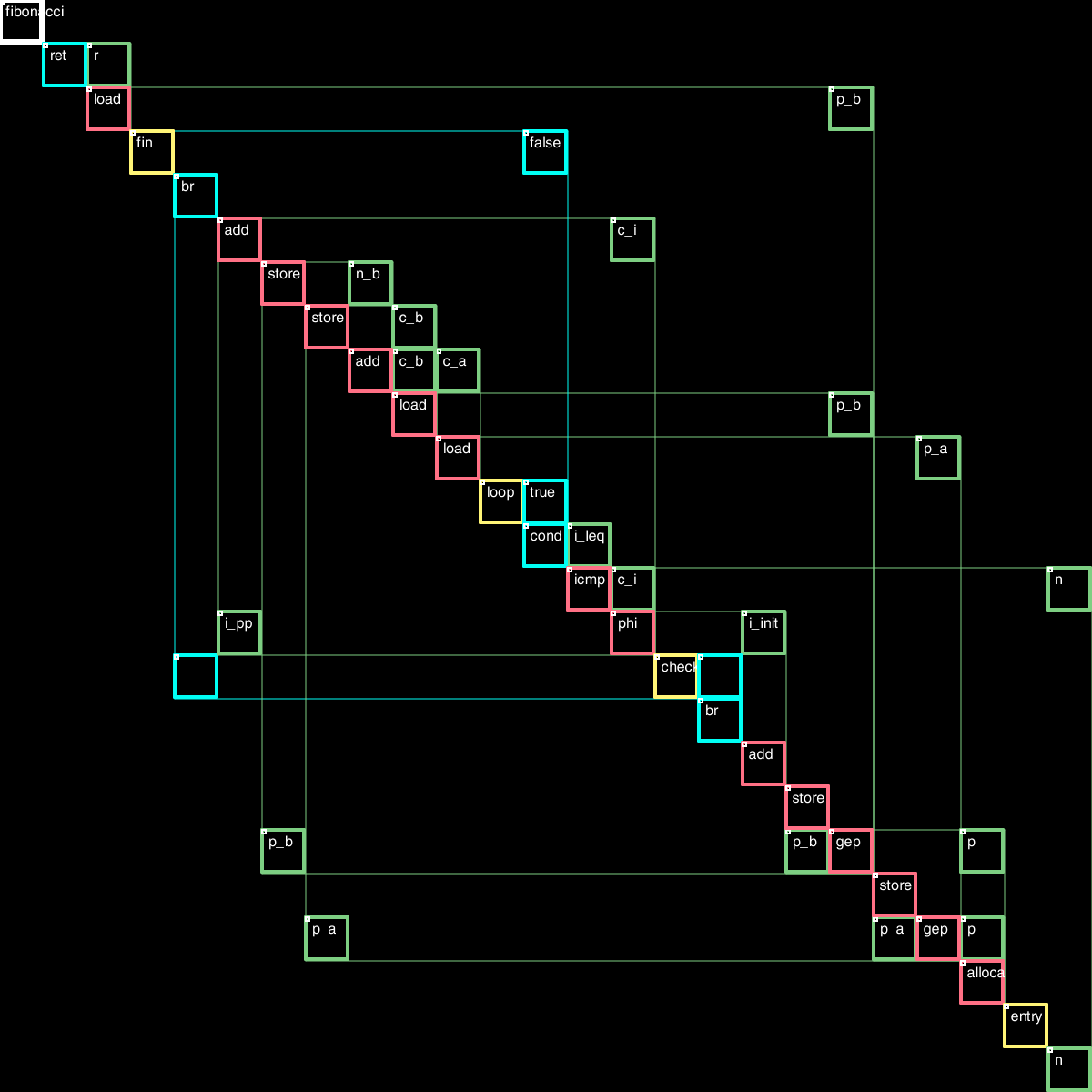RW
an experiment in presenting code
WHY?
Assembly languages can be useful for assembling.
HOW?
Sparse matrices are easy to read. Machines already excel at them. Digital displays do not waste empty space. Hear this out.
Sequence of instructions, hierarchy of syntax, web of bindings. All three need to be ready for code to be present.
The actual experiment here is to anchor the fractal sequence along the diagonal of an adjacency matrix.
Orthogonal frames nest very easily. Control-flow and data-flow graphs are not blurred. The interwoven structure can be read from the links scattered across the matrix. Cells around the diagonal represent local links; reaching further out around the corner.
Fig 1. Initial rendering on a spreadsheet. Start from the bottom right and climb up to return statement on the top left. Work against gravitational potential is too good to pass.
WHERE?
define i32 @factorial(i32 %n) {
entry:
%i_initial = add i32 2, 0
%f_initial = add i32 1, 0
br label %check
check:
%c_i = phi i32 [%i_initial, %entry], [%i_pp, %loop]
%c_f = phi i32 [%f_initial, %entry], [%n_f, %loop]
%i_leq = icmp sle i32 %c_i, %n
br i1 %i_leq, label %loop, label %fin
loop:
%n_f = mul i32 %c_f, %c_i
%i_pp = add i32 %c_i, 1
br label %check
fin:
%r = phi i32 [%c_f, %check]
ret i32 %r
}Fig 2. presentation for factorial computation along with the llvm assembly input.
%ab = type {i32, i32}
define i32 @fibonacci(i32 %n) {
entry:
%p = alloca %ab
%p_a = getelementptr %ab, %ab* %p, i32 0, i32 0
store i32 1, i32* %p_a
%p_b = getelementptr %ab, %ab* %p, i32 0, i32 1
store i32 1, i32* %p_b
%i_init = add i32 1, 0
br label %check
check:
%c_i = phi i32 [%i_init, %entry], [%i_pp, %loop]
%i_leq = icmp sle i32 %c_i, %n
br i1 %i_leq, label %loop, label %fin
loop:
%c_a = load i32, i32* %p_a
%c_b = load i32, i32* %p_b
%n_b = add i32 %c_a, %c_b
store i32 %c_b, i32* %p_a
store i32 %n_b, i32* %p_b
%i_pp = add i32 %c_i, 1
br label %check
fin:
%r = load i32, i32* %p_b
ret i32 %r
}Fig 3. Presentation for fibonacci with some pointer operations on the stack. Load and store is just too good to hide.
We let go of static renderings beyond these examples. At least in full detail. Some form of folding is in the works.
WHEN?
It would not have been wise to deal with sparse matrices on paper. Digital displays, on the other hand, are full of surprises.
ASPIRATIONS
It would be good to have tools and toys we can break and make again. We need couplings we can trace and coalesce.
OS-COMPILER-EDITOR trio got somehow buried under the drag-n-drop interfaces and object oriented technology. Easing the burden on heroic compilers and creating dwelling space close to machines may provide worthy challenges.
Space is the ground of meaning for a species dedicating more than half the neural processing on tactile and visual stimuli. Clumsy flow charts can not exhaust that.
Real takes detail. Screens can support it. Document jumps and interactive TV make for astronomical burden on imagination. We should look at the wonderous over curious.


